Technology & A New Normal
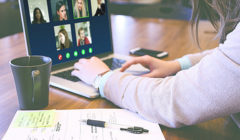
The term used is “new normal.”
Over the course of recorded history, it’s happened a number of times, both long-term and short. Sometimes it was a war or conquest that changed the way things worked, the shape of the world, the way history was written. Sometimes it was a discovery, like “the New World” by the old (remember we are looking at history through the eyes of the Western story), or learning that you couldn’t sail over the top of the world for trade. Most recently, it has been technology driving how we manage our lives: the internal combus- tion engine, automobiles, space ships, the nuclear bomb, telephones, television, the computer, the cell phone.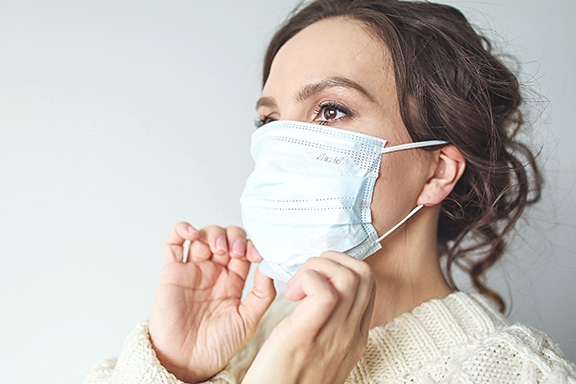
And of course, there have been plagues and recovery from plagues. Often inadver- tently, diseases changed the course of wars or encounters, such as the bubonic plague being brought back from a resistant Orient to Europe with devastating consequences (though it didn’t stop Europeans from venturing out into the world), or smallpox being brought by unwitting visitors to the New World and wiping out huge numbers of tribes who had never encountered it before – the same was true of measles in both the New World and the South Pacific.
Polio was one disease that did, indeed, if only temporarily and in a limited way, shift the way people did things. People would stay isolated if an outbreak showed up,
particularly from places where water might be contaminated, as the means of transmis- sion is “fecal-oral,” which is to say through contamination of food or water by infected fecal matter. Before the development of a vaccine, it was a frequent summer-time fear of parents, especially since it could leave patients dead, crippled, or with a nasty post-re- covery limitation called “post-polio syndrome,” in which a secondary crippling effect was noted. However, a vaccine was developed, and combined with sanitary improvements, the advanced world rarely sees cases of it – and efforts are being made to eradicate it worldwide.
The 1918 flu, or “Spanish Influenza,” was another remarkable event that did have people wearing masks, and avoiding congregating in large groups – and also probably brought World War I to an earlier than expected end. At first expected to be a seasonal flu, this virus hit young adults more than the very young or the elderly, which in itself was unusual – but also was extremely hard on the troops, and with such massive losses of life, by the time it had run its natural course (and immunity was “herd” level), tens of millions had died, and those waging war simply couldn’t continue. Fate works in mysteri- ous ways.
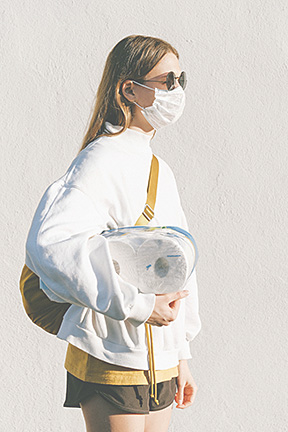
Yes, people learned – at a city, state, and nation-wide level – to find methods of dealing with a “pandemic,” and many of these methods are in place today as we cope with this latest pandemic. But never before has technology provided us with the alternatives we have today, and the potential they have to create a “new normal” from which we may never return.
One potential change is with education. Schools, from grade school through post- graduate, had already discovered the many benefits of the computer to aid education. While the old educational TV programs, recorded and delivered over the air (or via cable) had brought enrichment to the classroom as far back as the 60s and 70s, the computer has enabled groups to gather “virtually” for class. Students have discovered the joys (and pains) of not having to “go” to class, but being able to attend remotely, or better yet, at their own pace via recorded lessons and lectures. Teachers, while many miss the class- room, often find they can be effective online, and some parents have not only gotten used to small groups or online lessons, but find they benefit from having more interac- tion with their children’s day to day education. While the college experience had already opened to Online Universities, group efforts like Cousera had raised the bar for the qual- ity and rigor of online courses, and could even effectively grant certificates for ongoing education.
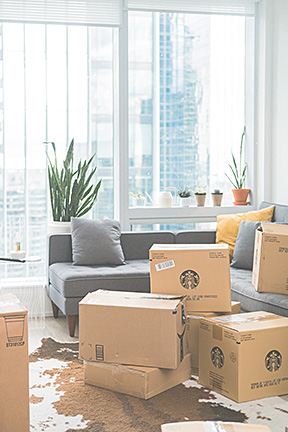
Already a growing phenomenon, home delivery of everything from replacement toothbrushes to grocery orders has become more and more the norm as people find it uncomfortable to “mask up” to go to the grocery store, and less time consuming to shop online. Everything from the old standby, Amazon, to your local grocery store, hardware store, and favorite restaurants will deliver or bring your order to your car as you pull up. I’m old enough to remember when shopping for music involved going to a store, putting on a headset and trying out some music you thought you might like. (Before my time, there were “listening booths” for that!) Then you’d bring home a CD. That form of shop- ping was soon replaced with sampling your music online, downloading your purchases and burning your own CDs – including cover art if you wanted. Or, simply adding the music to your stored collection, and creating your own playlists. It didn’t take long for people to adapt to the ease of music shopping and using the available technology to enable it all.
More and more jobs have found ways to accommodate “work from home.” Already, many jobs were conducted more via computer than in-person, and people have adapted to regular “Zoom” meetings replacing those conducted in the board room, and FaceTime enables a client to be directly in touch, even visually, with an agent or service person.
Small group get togethers and “hangouts” enable employee “water cooler” chats as needed.
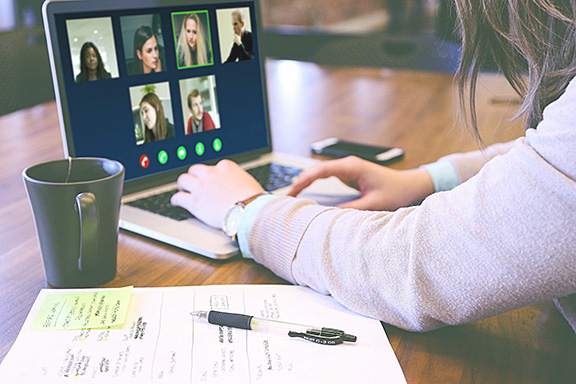
You’d expect your doctor to be limited by the lack of in-person contact. To a degree, this is true – but even doctor’s offices are finding they can get more done, and be effec- tive in some cases, with “virtual visits.” By training patients to report symptoms and even take blood pressures at home, and by “visiting” the office via a video assisted portal, doctors can conduct normal checkups or visits for medication renewals relatively easily. One doctor reported being able to reopen for regular visits soon, but because patients liked the online visits, were planning to maintain virtual visits for patients who requested them, if appropriate.
Live entertainment has even proved to be manageable, at least to a degree, remotely, using technology. Bands and comedians quickly adapted to virtual shows, and most people have fairly sophisticated home theatres these days, so picture and sound quality hold up pretty well, and while you might miss the crush of a crowd at a venue for a big band, it’s also possible to gather together with a small group of close friends and family and still enjoy a gathering. Movies are “opening” online in some cases, and the upside to that is not having to get dressed to go to the theater, and plenty of streaming services that will show you your film on your schedule.
And, our sense of “scale” may have, at least temporarily, have adjusted – at least for the older cohorts. Young people, unmarried people, people who are involved in competitive sports or large group activities are still going to want to gather in larger groups. But the ease of getting a small group together, watching a movie at home, spending more “fam- ily” time – these things were typical for the average person in times past, and perhaps they will be again.
 So, once a vaccine evolves for this flu – and it will – what will we do? We won’t remain isolated. People will be eager for get-togethers for dining and drinks and parties and concerts. But other activities may have adjusted permanently. Work-from-home may have evolved for good, including some jobs that might have eventually adapted, but perhaps not so soon. Schools may remain part-time at school, part time at home or in small groups. Shopping could move past bricks-and-mortar almost completely (except perhaps for clothing!) since it was already well on the way. The open question, it would seem to at least this observer, is how long do we have before the “old” normal is replaced in our habits and infrastructure?
So, once a vaccine evolves for this flu – and it will – what will we do? We won’t remain isolated. People will be eager for get-togethers for dining and drinks and parties and concerts. But other activities may have adjusted permanently. Work-from-home may have evolved for good, including some jobs that might have eventually adapted, but perhaps not so soon. Schools may remain part-time at school, part time at home or in small groups. Shopping could move past bricks-and-mortar almost completely (except perhaps for clothing!) since it was already well on the way. The open question, it would seem to at least this observer, is how long do we have before the “old” normal is replaced in our habits and infrastructure?









